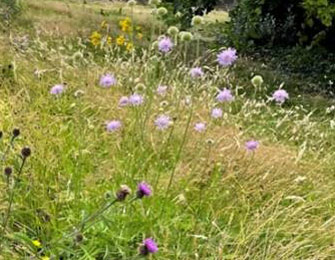The protection of wildflowers across Denbighshire has received a boost with Denbighshire County Council’s Wildflower Meadows Project recording 340 different plant species at sites across the county.
Denbighshire County Council is a Wildflower Turf Ltd Accredited Partner and their Wildflower Meadow Project started back in 2019 after the Council declared a Climate and Ecological Emergency.
The project aims to restore and increase the amount of habitat available throughout the county for pollinators and wildlife and is part of the Council’s wider ‘Bee Friendly’ campaign.
Initially, the wildflower habitat potential of a number of sites was assessed, with 21 sites selected for the first-year pilot. Those sites have now grown to over 100 managed wildflower meadow sites, including 11 roadside nature reserves, making up nearly 35 football pitches worth of native wildflower habitat.
Across the meadows, the maximum number of wildflower species recorded on any site this season reached 55, with the top five wildflower species recorded during 2022 being ribwort plantain, creeping buttercup, white clover, daisy and dandelion.

This year the biodiversity team has also discovered new wildflower species setting up home in meadows looked after by the project.
Chicory and bee orchids have been discovered at sites in the Denbigh area and, over in Ruthin, pyramidal orchid and musk mallow have also been found.
As well as safeguarding and improving local biodiversity across Denbighshire, this project is instrumental in supporting the preservation of native flowers and insect populations.
The Council also has a Tree Nursery at St Asaph which has grown nearly 8,000 wildflower plants which will be distributed across meadows to increase the diversity of species and colour of the sites.
All of the Council’s wildflower sites are managed in line with Plantlife’s ‘Managing Grassland Road Verges’ guidelines which recommend grass cutting to be prohibited between March and August each year, giving wildflowers enough time to grow, flower, and set seed.